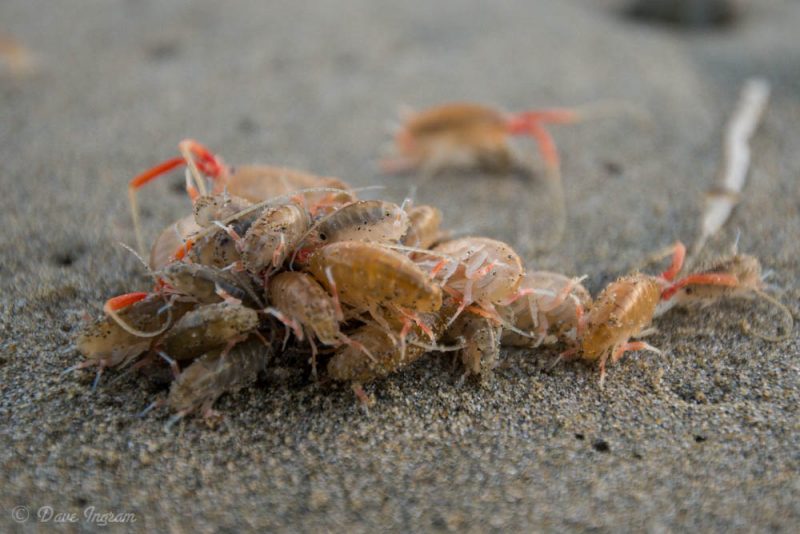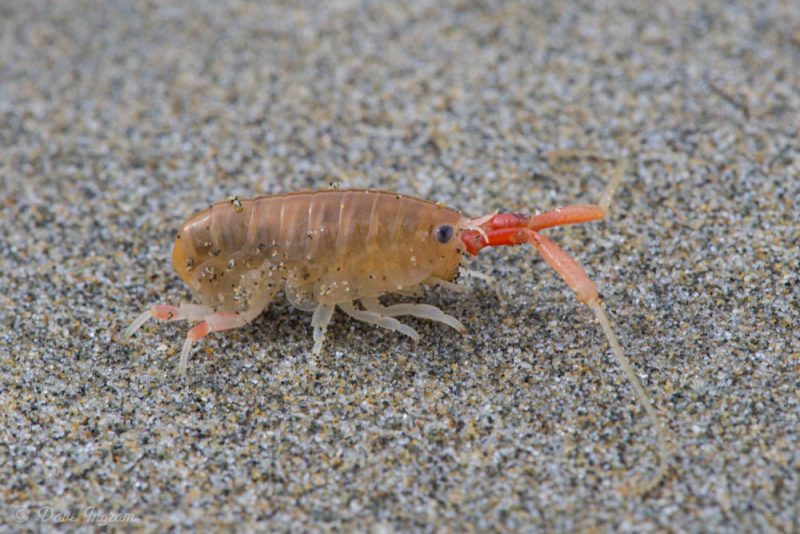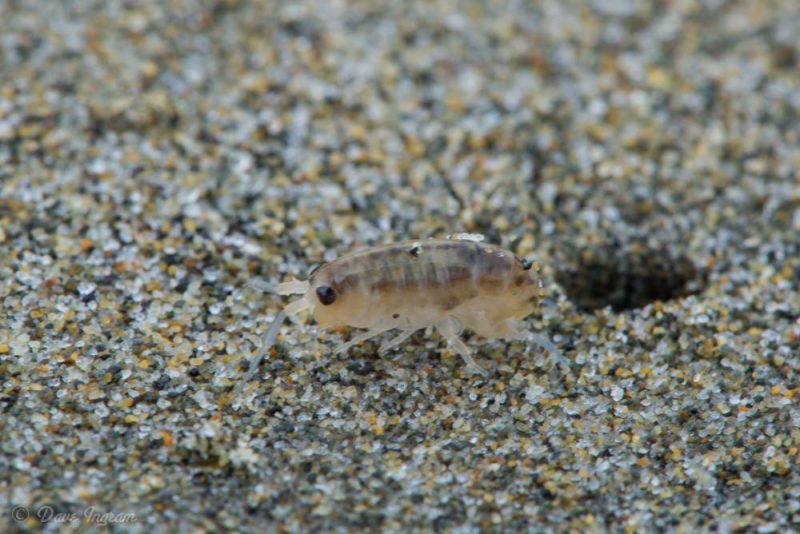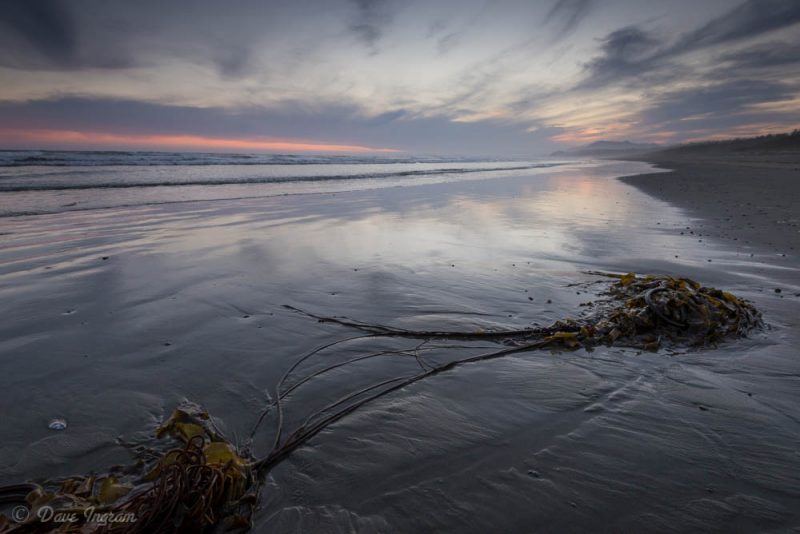Sand fleas, beach hoppers, beach fleas – these are a few of the names given to the (usually) small little jumping things leaping about on the sand in a frantic attempt to escape your descending bare feet. At first encounter they can be a bit hard to love, maybe due to the unpredictable trajectory of their jumps and the possibility that they’ll end up on or under your feet looking for shelter if you stand still long enough. Let’s not even consider the havoc that ensues if you happen to be sun bathing and one of these little fellows hops over to visit.

Beach hoppers are quite fascinating to watch if you take the time to observe their behaviour. The jumping is definitely entertaining. The devouring of decaying plant material is a bit unnerving and I wasn’t sure if the ones I found were focused on eating the dead seaweed washed up on the beach, mating, defending territory, or eating each other. And then there is the jumping again—makes them challenging to photograph.

California Beach Hopper
At Wickaninnish Beach in Pacific Rim National Park Reserve, beach hoppers of two distinctly different sizes can be seen and appreciated. The larger, more obvious species is the California beach hopper (Megalorchestia californiana). The large size (up to 2.7 cm in length) and the bright red antennae make it easy to spot and identify. Rather than springing away, this larger beach hopper will usually scurry along looking for shelter or disappearing into a hole in the sand.

Pale Beach Hopper
Also mixed with the California beach hoppers are the pale beach hoppers (Megalorchestia columbiana). These hoppers are smaller (up to 2 cm in length) and paler in colour, with “butterfly” marks on the top. They lack the red antennae and usually make their escape by springing to safety (or in seemingly random directions) by rapidly flexing and straightening their bodies. Note that female California beach hoppers also lack red antennae and aren’t quite as large as the males.
The good thing is that these beach hoppers are harmless (unlike the sometimes aggressive water-line isopods (Cirolana kincaidi) which can be found following the line of the tide) and do an important job breaking down the kelp and other plant material washed up on the shore. Lift up a piece of seaweed and you’re sure to find countless numbers of both species seeking shelter and food in the moist mass of decaying algae. Think about these rather beautiful little amphipods the next time you’re enjoying a sunset walk on the beach and know that part of nature’s clean up crew is hard at work!
